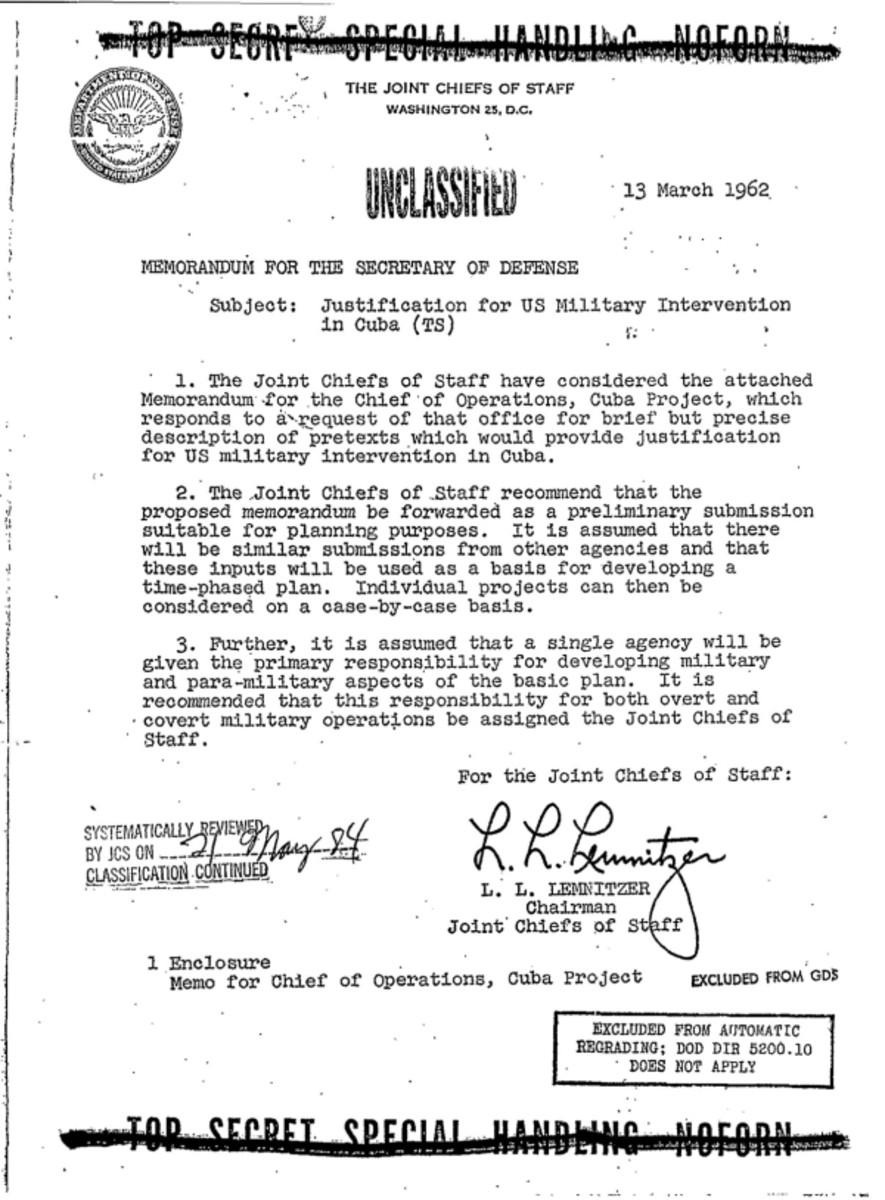Judi Lynn
Judi Lynn's JournalColombia's Elections: Assassinations, presidential death squads, fraud and a fragile peace process u
Joe Cederwall Friday, 25 May 2018, 1:46 pm
Article: Joseph Cederwall
Next week Colombia, goes to the polls in one of the most pivotal and closely fought elections in decades. This election will now take place under the watch of EU monitors as an escalating fraud scandal develops surrounding the recent congressional elections. The two frontrunners are starkly contrasted, as are the potential outcomes for Colombia and the entire Latin American region. The election has been notable for the massive popularity of (and an assassination attempt on) leftist anti-establishment and charismatic anti-corruption candidate Gustavo Petro. It has also seen the opening of a Supreme Court murder investigation against former hard-right President Álvaro Uribe Vélez over his alleged role in war crimes committed by paramilitary death squads. It has seen major revelations over corruption and the extent of the state and military involvement in atrocities in Colombia’s long running civil war and in Cocaine trafficking. Meanwhile, the fragile year-old peace process is on the verge of collapse. However, despite all this, the right-wing candidate Ivan Duque, close ally and ordained political heir of Uribe, leads in the polls one week out. The results of a victory for Duque could be catastrophic, not only for the continued progress of this nation and the peace process, but for the wider geopolitical stability of Latin America.
Why Colombia’s Elections Matter
With 49 million people, Colombia is the third-most populous country in Latin America, after Brazil and Mexico. However, due to its central geographical position, and central role in the ‘Bolivarian’ Latin American independence movement, Colombia has always held a historical leadership role in the region. The 30 year long civil war that claimed at least 220,000 lives, displaced nearly six million people, and resulted in 27,000 kidnappings and 25,000 disappearances has slowly started to wind down. This is largely due to the more stable rule and more amenable attitude towards the legitimate calls for justice by the communist insurgency of FARC since Uribe left office. The historic peace accord between the FARC guerillas and the government in 2016 was brokered by centre-right president (since 2010) and Nobel Peace Prize recipient Juan Manuel Santos. This deal promised great things for stability and peace in the region and the war was significantly de-escalated as a result. Business confidence was finally growing again in Colombia, and the nation was on track to becoming a regional powerhouse once again.
A Fragile Peace
However, with the increasing influence of the USA over the years and decades of neoliberal rule, the prosperity of Colombia has not reached far outside the wealthy upper echelons, mostly in the main cities of Bogota and Medellin. Furthermore, the Peace process is now near to falling apart. Santos’ government has been accused of failing to deliver on its end of the bargain to rejuvenate rural areas with upgrades to infrastructure, health, education and agriculture and create real transitional opportunities for ex-combatants.
In the first year of the process, the government executed less than 20% of the agreements made with the guerrillas and there have been allegations of corruption and missing funds within the project. The media and right-wing politicians, meanwhile have seized on this faltering of the peace process to fuel the fire of opposition to the peace process and garner votes for their more hard-line approach towards FARC. The reality is, that Colombia’s institutions and state was never up to the undertaking of delivering this ambitious programme. However, ironically, this failure was also likely created or at least exacerbated by these same right-wing political and media players’ opposition to any real steps to enable more investment in the regions and in transitional initiatives.
More:
http://www.scoop.co.nz/stories/HL1805/S00168/colombias-elections-assassinations-presidential-death-squads-fraud-and-a-fragile-peace-process-under-threat.htm
Colombia's election could mark the start of a resurgent left
MAY 24, 2018 / 10:59 AM / A DAY AGO
Julia Symmes Cobb, Helen Murphy
8 MIN READ
BOGOTA (Reuters) - Left-wing presidential candidate Gustavo Petro had a simple but radical proposal for his audience in the small industrial town of Yumbo in western Colombia.
What if his government bought a huge stretch of land owned by billionaire sugar baron Carlos Ardila Lulle close to the nearby city of Cali?
“It would be nice if he decided, once we are in power, to sell his Incauca farm to the government so we can give it to peasant farmers,” said Petro, a former rebel with the M19 urban guerrilla group, speaking during a rally on April 26.
The crowd roared approval for an idea that would not have sounded out of place in the platform of several leftist Latin American leaders in recent years but that seemed shocking from a mainstream candidate in Colombia.
More:
https://www.reuters.com/article/us-colombia-election-left-analysis/colombias-election-could-mark-the-start-of-a-resurgent-left-idUSKCN1IP2TY?feedType=RSS&feedName=worldNews&utm_source=feedburner&utm_medium=feed&utm_campaign=Feed%3A+Reuters%2FworldNews+%28Reuters+World+News%29&&rpc=401
Colombia re-arrests Pablo Escobar's hitman for extortion
Updated 1:24 pm, Friday, May 25, 2018
BOGOTA, Colombia (AP) — Colombian police have re-arrested a former hit man for the late drug lord Pablo Escobar as part of an investigation into extortion.
The chief prosecutor's office said Friday that Jhon Jairo Velasquez was arrested in Medellin. It has yet to provide details about the investigation.
Velasquez, known by his nickname Popeye, was paroled in 2014 after confessing to hundreds of murders and spending 22 years in jail for plotting the assassination of a former Colombian presidential candidate.
He has since gained notoriety as a YouTube star who espouses conservative political views and hate-filled diatribes against leftist rebels and Venezuela's socialist government. Last week he took aim at Colombia's leftist presidential candidate Gustavo Petro, warning that his "rifle will speak for me."
More:
https://www.chron.com/news/crime/article/Colombia-re-arrests-Pablo-Escobar-s-hitman-for-12944146.php

Jhon Jairo Velasquez


Biography of Pablo Escobar
Colombia's Drug Kingpin
by Christopher Minster
Updated April 17, 2018
Pablo Emilio Escobar Gaviria was a Colombian drug lord and leader of one of the most powerful criminal organizations ever assembled. During the height of his power in the 1980s, he controlled a vast empire of drugs and murder that covered the globe. He made billions of dollars, ordered the murder of hundreds, if not thousands of people, and ruled over a personal empire of mansions, airplanes, a private zoo and even his own army of soldiers and hardened criminals.
. . .
The Height of Power
By the mid-1980s, Pablo Escobar was one of the most powerful men in the world. Forbes magazine listed him as the seventh-richest man in the world. His empire included an army of soldiers and criminals, a private zoo, mansions, and apartments all over Colombia, private airstrips and planes for drug transport and personal wealth reported to be in the neighborhood of $24 billion. He could order the murder of anyone, anywhere, anytime.
More:
https://www.thoughtco.com/biography-of-pablo-escobar-2136126
Colombia's Elections: Assassinations, presidential death squads, fraud and a fragile peace process u
Colombia’s Elections: Assassinations, presidential death squads, fraud and a fragile peace process under threat
Joe Cederwall Friday, 25 May 2018, 1:46 pm
Article: Joseph Cederwall
Next week Colombia, goes to the polls in one of the most pivotal and closely fought elections in decades. This election will now take place under the watch of EU monitors as an escalating fraud scandal develops surrounding the recent congressional elections. The two frontrunners are starkly contrasted, as are the potential outcomes for Colombia and the entire Latin American region. The election has been notable for the massive popularity of (and an assassination attempt on) leftist anti-establishment and charismatic anti-corruption candidate Gustavo Petro. It has also seen the opening of a Supreme Court murder investigation against former hard-right President Álvaro Uribe Vélez over his alleged role in war crimes committed by paramilitary death squads. It has seen major revelations over corruption and the extent of the state and military involvement in atrocities in Colombia’s long running civil war and in Cocaine trafficking. Meanwhile, the fragile year-old peace process is on the verge of collapse. However, despite all this, the right-wing candidate Ivan Duque, close ally and ordained political heir of Uribe, leads in the polls one week out. The results of a victory for Duque could be catastrophic, not only for the continued progress of this nation and the peace process, but for the wider geopolitical stability of Latin America.
Why Colombia’s Elections Matter
With 49 million people, Colombia is the third-most populous country in Latin America, after Brazil and Mexico. However, due to its central geographical position, and central role in the ‘Bolivarian’ Latin American independence movement, Colombia has always held a historical leadership role in the region. The 30 year long civil war that claimed at least 220,000 lives, displaced nearly six million people, and resulted in 27,000 kidnappings and 25,000 disappearances has slowly started to wind down. This is largely due to the more stable rule and more amenable attitude towards the legitimate calls for justice by the communist insurgency of FARC since Uribe left office. The historic peace accord between the FARC guerillas and the government in 2016 was brokered by centre-right president (since 2010) and Nobel Peace Prize recipient Juan Manuel Santos. This deal promised great things for stability and peace in the region and the war was significantly de-escalated as a result. Business confidence was finally growing again in Colombia, and the nation was on track to becoming a regional powerhouse once again.
A Fragile Peace
However, with the increasing influence of the USA over the years and decades of neoliberal rule, the prosperity of Colombia has not reached far outside the wealthy upper echelons, mostly in the main cities of Bogota and Medellin. Furthermore, the Peace process is now near to falling apart. Santos’ government has been accused of failing to deliver on its end of the bargain to rejuvenate rural areas with upgrades to infrastructure, health, education and agriculture and create real transitional opportunities for ex-combatants.
In the first year of the process, the government executed less than 20% of the agreements made with the guerrillas and there have been allegations of corruption and missing funds within the project. The media and right-wing politicians, meanwhile have seized on this faltering of the peace process to fuel the fire of opposition to the peace process and garner votes for their more hard-line approach towards FARC. The reality is, that Colombia’s institutions and state was never up to the undertaking of delivering this ambitious programme. However, ironically, this failure was also likely created or at least exacerbated by these same right-wing political and media players’ opposition to any real steps to enable more investment in the regions and in transitional initiatives.
More:
http://www.scoop.co.nz/stories/HL1805/S00168/colombias-elections-assassinations-presidential-death-squads-fraud-and-a-fragile-peace-process-under-threat.htm
Sounds a lot like Operation Northwoods to me. Get the public fired up, then overthrow Cuba
with the full support of the most simple minded among us who can't be bothered to think things through, and ask questions.
Operation Northwoods: US False Flag Attacks to Invade Cuba in 1962
Updated on July 31, 2017
David Hunt
Operation Northwoods
In March 1962 the US Joint Chiefs of Staff submitted preliminary plans to the US Secretary of Defense that included attacking an American military base and launching terrorist attacks in American cities. These and other incidents, under the code name Operation Northwoods, were “False Flag” operations, that is, incidents the US would stage in such a way that blame would fall on Castro's Cuba. In response to Cuba's “aggression”, the United States would then be justified in a massive invasion of Cuba, ridding the Western Hemisphere of a Communist outpost 90 miles off the coast of Florida.
Under the Umbrella of the Cuban Project
After the CIA-supported Bay of Pigs Invasion failed miserably in April 1961, the US started to develop the Cuban Project, an umbrella of covert operations to “help Cuba overthrow the Communist regime” by October 1962. Organized by President Kennedy's brother, Attorney General Robert Kennedy and the CIA, the Cuban Project was also known as Operation Mongoose. Operation Northwoods was one of 33 plans that were considered under Operation Mongoose; other plans included tainting Fidel Castro's clothes with thallium salts so his beard would fall out and spraying hallucinogens in the broadcast studio before Castro gave a televised speech.
Operation Northwoods contained nine “pretexts to justify US military intervention in Cuba”.
1. Provoke a Cuban military response
The best outcome would be to harass or trick the Cubans into believing an attack was imminent so they actually attacked US forces first.
2. Stage a Cuban Attack on Guantanamo
Friendly uniformed Cubans could be used to attack the US Guantanamo Bay Naval Base in southeastern Cuba, including actually firing mortars into the base and damaging some infrastructure. Meanwhile, aircraft on the ground inside the base could be sabotaged and burned and a ship sunk in the harbor entrance. “Attacking” Cubans would be captured and mock funerals held for their American victims. The US would respond by attacking Communist Cuban artillery and mortar emplacements near Guantanamo to be followed by large scale military operations.
More:
https://owlcation.com/humanities/Operation-Northwoods-US-False-Flag-Attacks-to-Invade-Cuba-in-1962
~ ~ ~
U.S. Military Wanted to Provoke War With Cuba
By DAVID RUPPE N E W Y O R K, May 1, 2001
In the early 1960s, America's top military leaders reportedly drafted plans to kill innocent people and commit acts of terrorism in U.S. cities to create public support for a war against Cuba.
America's top military brass even contemplated causing U.S. military casualties, writing: "We could blow up a U.S. ship in Guantanamo Bay and blame Cuba," and, "casualty lists in U.S. newspapers would cause a helpful wave of national indignation."
The plans were developed as ways to trick the American public and the international community into supporting a war to oust Cuba's then new leader, communist Fidel Castro.
America's top military brass even contemplated causing U.S. military casualties, writing: "We could blow up a U.S. ship in Guantanamo Bay and blame Cuba," and, "casualty lists in U.S. newspapers would cause a helpful wave of national indignation."
More:
https://abcnews.go.com/US/story?id=92662&page=1
~ ~ ~
Operation Northwoods: When the US Joint Chiefs of Staff slid into insanity
BY DOUG POPPA · APRIL 21, 2017 ·
Operation Northwoods: When the US Joint Chiefs of Staff slid into insanity
BY DOUG POPPA · APRIL 21, 2017 · 0 COMMENTS
·
Fifty-five years ago, a top-secret plan was proposed by the United States government to secure support for military intervention against Cuba. A plan that included acts of terrorism, sabotage, murder, treason and other crimes, many of which were proposed to occur on American soil.
I have read plenty of declassified government documents over the years and after reading many of them I found myself screaming out loud, WTF. Operation Northwoods I must tell you, tops them all.
Documents referencing Operation Northwoods surfaced about 20 year ago after being hidden from the American public for almost 40 years.
It is the definitive blueprint for false flag operations. A false flag is a covert operation that is designed to deceive in a way that the activities appear as though they are being carried out by a group or nation other than those who actually planned and executed them.
More:
http://baltimorepostexaminer.com/operation-northwoods-us-joint-chiefs-staff-slid-insanity/2017/04/21
~ ~ ~
If you haven't heard of "Operation Mongoose" already, you will perhaps find that material bizarre, and perplexing, and, apparently standard in ways most people have never known!
Operation Mongoose
The Cuban Project, also known as Operation Mongoose, was a covert operation of the Central Intelligence Agency (CIA) that was commissioned in March 1960 during the final year of President Dwight D. Eisenhower's administration. On November 30, 1961, covert operations against Fidel Castro's government in Cuba were officially authorized by President Kennedy and after being given the name Operation Mongoose at a prior White House meeting on November 4, 1961. The operation was led by United States Air Force General Edward Lansdale and went into effect after the failed Bay of Pigs Invasion.
Operation Mongoose was a secret program against Cuba aimed at removing the Communists from power, which was a prime focus of the Kennedy administration.[1] A document from the United States Department of State confirms that the project aimed to "help Cuba overthrow the Communist regime", including its leader Fidel Castro, and it aimed "for a revolt which can take place in Cuba by October 1962". US policymakers also wanted to see "a new government with which the United States can live in peace".[2]
Origins
In 1959, the CIA predicted that Castro would have a difficult time hanging on to the government. The major initial fear was that Castro would demand that a much higher rent be paid by the U.S. for possession of Guantanamo Bay.[3] Early on there was a wait and see approach to judge if Castro was a communist. He was not deemed to be one initially, but his brother Raul was.[4] General C. P. Cabell noted in November 1959 that while Castro was not a communist he allowed free opportunity to the communist party in Cuba to grow and spread its message. Nonetheless, by December plans were already being tossed around between high ranking US Foreign Policy Officials that called for overthrowing the Castro government.[5] An official report from the CIA states that, by March 1960, the United States had already decided that Fidel Castro must be displaced. Due to the United States' fear of repercussions from the United Nations, the plan was kept at the highest level of secrecy, and as thus, "plausible deniability" was made a key focal point in American clandestine service policy.[6]
Formal Authorization for Action
The government formally authorized the operation on March 17, 1960 when President Eisenhower signed off on a CIA paper entitled “A Program of Covert Action Against the Castro Regime.”[7] A declassified report by the Inspector General Lyman Kirkpatrick details the history of the operation, and states that the presidential order gave the agency authorization to create an organization of exiled Cubans to manage opposition programs, begin a “propaganda offensive” to draw support for the movement, create an intelligence gathering network inside Cuba, and to “develop a paramilitary force to be introduced into Cuba to organize, train and lead resistance groups against the Castro regime.[7] The CIA’s budget estimation for this covert operation was approximately $4.4 million.[7] The paper signed by Eisenhower was also the sole report issued by the government throughout the entire project. This highlights the U.S. Government’s secrecy in carrying out the operation as well as its policy of plausible deniability. This program required the agency to work around the clock and collect a large amount of detail-specific information, as well as to cooperate with other agencies.[7] To secure the needed financial backing, the “Bender Group” was developed as an organization that would provide American businessmen a secret avenue through which to trade with Cuban groups.[7] On May 11, 1960, the Bender Group came to an agreement with group called Frente Revolucionario Democratico (FRD).[7] Propaganda activities included using print and radio mediums to broadcast anti-Castro messages. These programs were launched all over Latin America.[7] Large amounts of real estate were purchased by the agency for use in this operation. A base of operations was established in Miami on May 25, by using a “New York career and development firm” and “a Department of Defense contract” as covers.[7] A communications station was also established on June 15 by using an Army operation as a cover.[7] The agency also obtained safe houses all over Miami for different “operational purposes.”[7] The CIA also acquired properties in different US cities and abroad for various reasons.
More:
https://en.wikipedia.org/wiki/Cuban_Project
~ ~ ~
JFK Documents Highlight Talks On Clandestine Anti-Cuba Ops
October 27, 20176:25 AM ET
It was the late summer of 1962.
The previous year, the U.S. invasion of the Bay of Pigs, meant to topple the communist regime of Fidel Castro, had been an embarrassing failure.
. . .
Here are some of the possible operations against Cuba. Some are only alluded to, others given a bit more detail. It is not known which, if any, were actually put into practice:An apparent plan to use balloons to drop propaganda leaflets over Cuba: "After considerable discussion, it was agreed that details should be presented to the Group, to include the content of the leaflets which would be dropped, and specifics as to the method and place of launching, the technical details of the release of leaflets, etc., etc." Possible disruption of Cuban radio and TV broadcasts: "Mr. Murrow explained the far-reaching reactions that the Cubans could mount against U.S. radio stations, and said that he felt on balance it would not be profitable to provoke this kind of electronic warfare."
More:
https://www.npr.org/sections/thetwo-way/2017/10/27/560352638/jfk-documents-highlight-talks-on-clandestine-anti-cuba-ops

Edward Lansdale, the psy-ops specialist who was active in
the Phillipines prior to working on Cuba projects, and later
was involved in the Viet Nam War.
Any reading about him will be very unpleasantly enlightening.
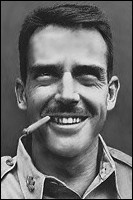

Lansdale, middle, with CIA head, Allen Dulles
PSYWAR in the Philippines | ASWANG of the CIA
“To the superstitious, the Huk battleground was a haunted place filled with ghosts and eerie creatures.”
~Air Force Brigadier General Edward G. Lansdale
The Hukbalahap Rebellion was a rebellion staged by former Hukbalahap or Hukbo ng Bayan Laban sa Hapon (Anti-Japanese Army) soldiers against the Philippine government. It started during the Japanese occupation of the Philippines in 1942 and continued during the presidency of Manuel Roxas, and ended in 1954 under the presidency of Ramon Magsaysay. Part of the reason this rebellion was able to be ended was the involvement of a famous clandestine commander, Air Force Brigadier General Edward G. Lansdale. A firm believer in the efficacy of “psychological operations” (or PSYOP, for short — the military’s term for propaganda), Lansdale was a pioneering psywarrior.
Lansdale believed that to successfully implement psychological warfare, you needed a firm understanding of the socio-cultural beliefs and myths of the target. He believed that an exploitation of these mores and beliefs would result in a successfull campaign. Nowhere did Lansdale implement these tactics more ruthlessly than in the Philippines, where he served as the CIA’s chief operative during the early 1950s counterinsurgency campaign against the country’s Huk rebels.
I’ve heard stories about how Lansdale created “aswang armies”, slaughtered villagers and picked off Huk rebels through vicious attacks. You know how it goes, people love telling stories, and why not add your own spin? I decided to read Lansdale’s memoir, In the Midst of Wars: An American’s Mission to Southeast Asia, and hear his own account of these events.
Lansdale recalls, “A combat psywar squad was brought in. It planted stories among town residents of an asuang living on the hill where the Huks were based. Two nights later, after giving the stories time to make their way up to the hill camp, the psywar squad set up an ambush along the trail used by the Huks. When a Huk patrol came along the trail, the ambushers silently snatched the last man of the patrol, their move unseen in the dark night. They punctured his neck with two holes, vampire-fashion, held the body up by the heels, drained it of blood, and put the corpse back on the trail. When the Huks returned to look for the missing man and found their bloodless comrade, every member of the patrol believed that the asuang had got him and that one of them would be next if they remained on that hill. When daylight came, the whole Huk squadron moved out of the vicinity.”
https://www.aswangproject.com/psywar-in-the-philippines-aswang-of-the-cia/
~ ~ ~
Ed Lansdale’s Black Warfare in 1950s Vietnam
BY MARC D. BERNSTEIN
2/16/2010
Colonel Edward Lansdale, chief of the CIA's Saigon Military Mission, meets with Ngo Dinh Diem
after the CIA entered Vietnam in 1954 to help the pro-Western Vietnamese wage
political-psychological warfare.
(Douglas Pike Photo Collection, The Vietnam Archive, Texas Tech Univ.)
He was, for some, the genius cowboy who sometimes skirts the rules to achieve the just goals of Western democracy; for others, the embodiment of an arrogant foreign policy gone dangerously wrong.
A bit miffed at his last-minute orders to proceed directly from the Philippines to Vietnam, with no time to return home to Washington to prepare for his new covert mission or visit his family, Colonel Edward Lansdale flew into Saigon in the rattling bucket seat of an amphibian aircraft from the 31st Air-Sea Rescue Squadron. It was the first available flight out of Clark Air Force Base to Saigon, and the crewmen agreed to take him if he didn’t mind the extra flight time while they performed their patrol over the South China Sea. It was June 1, 1954, and as he sipped coffee from a paper cup he thought about what lay ahead. He’d heard about the French defeat at Dien Bien Phu and knew that the French and Viet Minh were working out a peace settlement in Geneva, but beyond that, his knowledge about the country was slim.
It was at a meeting convened in the Pentagon six months earlier to discuss Vietnam that Secretary of State John Foster Dulles had turned to Lansdale and told him, “We’re going to send you over there,” to which Lansdale replied, “Not to help the French!” No, he was reassured, he would help the Vietnamese put down the Communist-dominated Viet Minh in Indochina. Allen Dulles, director of the Central Intelligence Agency, joined with his brother in backing Lansdale to serve as the founder and chief of the CIA’s Saigon Military Mission (SSM), which was to quietly enter Vietnam and help the pro-Western Vietnamese wage political-psychological warfare.
The CIA was willing to give Lansdale, a San Francisco advertising executive before World War II, great latitude based on his success in black operations in the Philippines from 1950-53. A U.S. Army officer who transferred his commission to the Air Force after the war, he had helped the Philippine army put down the Hukbalahap (Huk) rebellion. Philippine Communists formed the guerrilla group originally to fight the Japanese in World War II. After Huk efforts to participate in the postwar government were rebuffed and a reportedly fraudulent election took place in 1949, the Huks began their guerrilla war to overthrow the U.S.-backed government. In waging war against the Huks, Lansdale wielded a wide array of counterinsurgency and psywar tools, some playing upon Filipino superstitions. One such successful unconventional tactic exploited villagers’ belief in vampires, another on ghosts of dead Huks. In Lansdale’s “Eye of God” campaign, suspected guerrillas living in a village were targets of psywar teams that surreptitiously painted a menacing eye on a wall facing the suspect’s hut. Although most notorious for these types of psywar operations, it was primarily Lansdale’s application of advertising principles and media manipulation that led to the honest election of Ramon Magsaysay as president in 1953.
But Vietnam was a different country with much different problems.
More:
http://www.historynet.com/ed-lansdales-black-warfare-in-1950s-vietnam.htm
Militant Cuban exile Luis Posada Carriles has died
Source: Associated Press
Gisela Salomon, Associated Press
Updated 9:27 am, Wednesday, May 23, 2018
MIAMI (AP) -- Former CIA operative and militant Cuban exile Luis Posada Carriles, who was accused of organizing a string of 1997 Havana hotel bombings and a 1976 Cuban airline bombing that killed 73 people, has died. He was 90.
Posada, who had been diagnosed with throat cancer about five years ago, died Wednesday at a care home for elderly veterans in Broward Country, north of Miami, according to Arturo Hernandez, a lawyer for the hardline exile.
. . .
Early on, Posada's CIA handlers described him as reliable and even a reasonable voice among the exiles, whom he was willing to inform on, according to declassified agency documents released at the request of the National Security Archives.
"A15 is not a typical kind of 'boom and bang' individual," CIA handler Grover Lythcott wrote in 1966, using a code name for Posada. "He is acutely aware of the international implications of ill-planned or overly enthusiastic activities against Cuba."
Read more: https://www.chron.com/news/world/article/Militant-Cuban-exile-Luis-Posada-Carriles-has-died-12936827.php
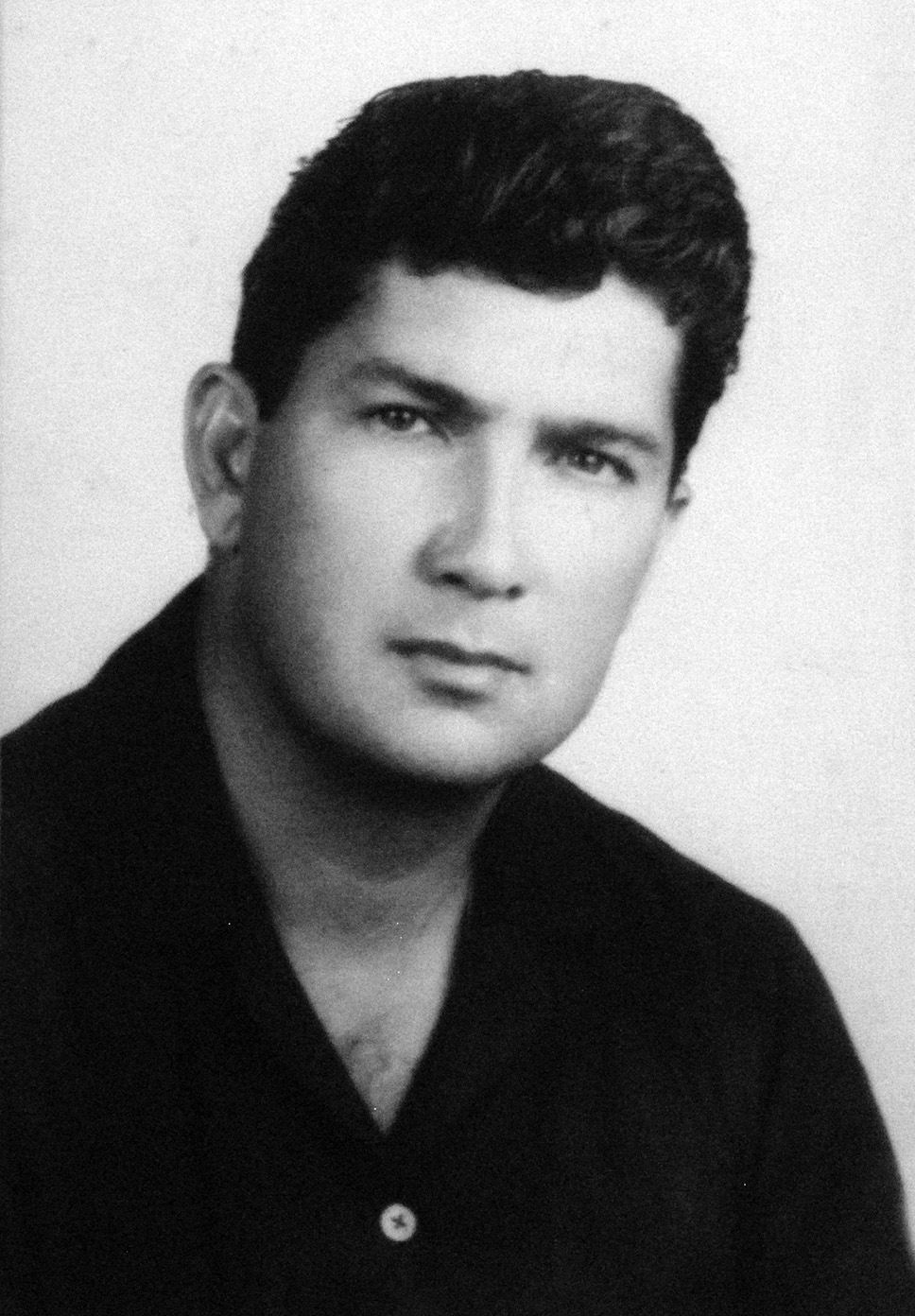
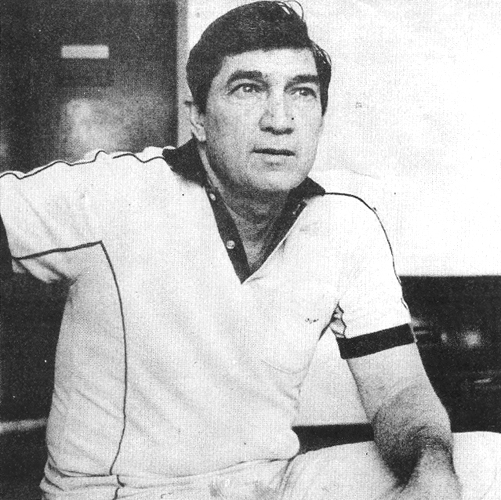


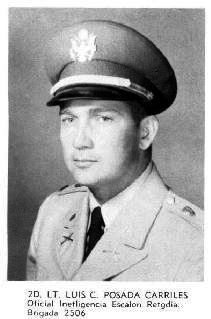
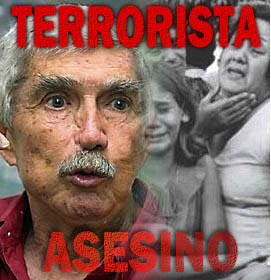
Cuban relatives of murdered Cubana
airline bombing victims.

Enjoying his celebrity in Miami among Cuban "exiles"

Standing with his Cubana bombing associate,
Orlando Bosch
Bolivia's Madidi National Park is most biodiverse in the world
Researchers hope the publicity earned by Madidi's record-setting biodiversity will encourage a continued commitment to conservation.
By Brooks Hays | May 22, 2018 at 2:27 PM
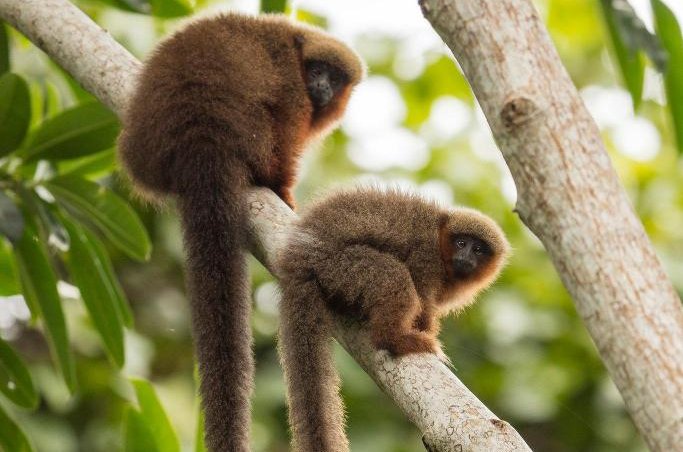
The forests of Bolivia's Madidi National Park are home to thousands of species,
including Madidi titi monkeys. Photo by Rob Wallace/Wildlife Conservation Society
May 22 (UPI) -- Bolivia's Madidi National Park is the world's most biodiverse protected area, according to a newly completed two-year survey of the park's plant and animal inhabitants dubbed "Identidad Madidi."
While documenting the park's thousands of plant and animal species, researchers identified 120 new candidate species of plants, butterflies and vertebrates.
"We have accomplished everything we hoped for and more on this journey of science and discovery," Robert Wallace, a scientist with the Wildlife Conservation Society who lead the recent survey, said in a news release. "The massive amounts of images and data collected on the expedition will provide us with the baseline information needed to protect this natural wonder for future generations of Bolivians and the world."
The park features dramatic elevation changes as the Amazon transitions to the Andes, and as a result, it hosts a wide range of ecosystems, including grasslands, rivers, streams, wetlands and several types of forests -- Amazonian forests, montane dry forests, treeline elfin forests, Andean foothill forests and cloud forests.
More:
https://www.upi.com/Science_News/2018/05/22/7121527008251/
Guardian: Venezuela shows that protest can be a defence of privilege
Street action is now regularly used with western backing to target elected governments in the interests of elites
Seumas Milne in Caracas
@seumasmilne
Wed 9 Apr 2014 16.30 EDT
If we didn't know it before, the upsurge in global protest in the past couple of years has driven home the lesson that mass demonstrations can have entirely different social and political meanings. Just because they wear bandannas and build barricades – and have genuine grievances – doesn't automatically mean protesters are fighting for democracy or social justice.
From Ukraine to Thailand and Egypt to Venezuela, large-scale protests have aimed at, or succeeded in, ousting elected governments in the past year. In some countries, mass protests have been led by working class organisations, targeting austerity and corporate power. In others, predominantly middle class unrest has been the lever to restore ousted elites.
Sometimes, in the absence of political organisation, they can straddle the two. But whoever they represent, they tend to look similar on TV. And so effective have street demonstrations been in changing governments over the past 25 years that global powers have piled into the protest business in a major way.
From the overthrow of the elected Mossadegh government in Iran in the 1950s, when the CIA and MI6 paid anti-government demonstrators, the US and its allies have led the field: sponsoring "colour revolutions", funding client NGOs and training student activists, fuelling social media protest and denouncing – or ignoring – violent police crackdowns as it suits them.
. . .
What are portrayed as peaceful protests have all the hallmarks of an anti-democratic rebellion, shot through with class privilege and racism. Overwhelmingly middle class and confined to wealthy white areas, the protests have now shrunk to firebombings and ritual fights with the police, while parts of the opposition have agreed to peace talks.
More:
https://www.theguardian.com/commentisfree/2014/apr/09/venezuela-protest-defence-privilege-maduro-elites
CIA and FBI Documents Detail Career in International Terrorism; Connection to U.S.
LUIS POSADA CARRILES
THE DECLASSIFIED RECORD
CIA and FBI Documents Detail Career in International Terrorism; Connection to U.S.
National Security Archive Electronic Briefing Book No. 153
For more information contact
Peter Kornbluh - 202/994-7116
May 10, 2005
Update - May 18, 2005 - Documents featured on May 17, 2005 edition of ABC's Nightline
Washington D.C. May 18, 2005 - The National Security Archive today posted additional documents that show that the CIA had concrete advance intelligence, as early as June 1976, on plans by Cuban exile terrorist groups to bomb a Cubana airliner. The Archive also posted another document that shows that the FBI's attache in Caracas had multiple contacts with one of the Venezuelans who placed the bomb on the plane, and provided him with a visa to the U.S. five days before the bombing, despite suspicions that he was engaged in terrorist activities at the direction of Luis Posada Carriles.
Both documents were featured last night on ABC Nightline's program on Luis Posada Carriles, who was detained in Miami yesterday by Homeland Security.
In addition, the Archive posted the first report to Secretary of State Kissinger from the State Department's Bureau of Intelligence and Research on the bombing of Cubana flight 455. The report noted that a CIA source had overheard Posada prior to the bombing in late September 1976 stating that, "We are going to hit a Cuban airliner." This information was apparently not passed to the CIA until after the plane went down.
There is no indication in the declassified files that indicates that the CIA alerted Cuban government authorities to the terrorist threat against Cubana planes. Still classified CIA records indicate that the informant might actually have been Posada himself who at that time was in periodic contact with both CIA and FBI agents in Venezuela.
More:
https://nsarchive2.gwu.edu/NSAEBB/NSAEBB153/
~ ~ ~ ~ ~
The Terrorist List, and Terrorism as Practiced Against Cuba
April 22, 2013 COHA

Of all the components to the United States hostile strategy against Cuba, nothing raises the ire of the Castro government more than its inclusion on the State Department’s list of states that sponsor terrorism. The designation is seen by Havana as an impediment towards improving relations and as a cruel hypocrisy that provides political cover for Washington to justify the imposition of economic penalties along with the perpetuation of anti-revolutionary propaganda.
There is an opportunity to eliminate that stumbling block in the next few weeks, if newly appointed Secretary of State John Kerry decides to recommend Cuba’s deletion from the list to President Obama. Kerry has until the release of the State Department’s annual terror report on April 30 to make the determination of whether Cuba will remain on the terrorist list. High ranking Cuban officials are closely watching this development, indicating the removal could offer an opportunity to re-engage with the United States. [1]
The history of Cuba’s controversial inclusion goes back to 1982, the same year Iraq was taken off the list by the Reagan administration. Besides Cuba, only Sudan, Iran, and Syria continue to be labeled as state sponsors of terrorism. North Korea was dropped in 2008, while Pakistan, long the home of Osama Bin Laden and recognized as a haven for Islamic terrorists, has never been considered. Saudi Arabia, where the majority of the 9/11 terrorists came from, is looked upon as a staunch ally of the United States.
There are numerous reasons why the Castro government finds its insertion on the list so galling. First are the real economic consequences to the designation. By law the United States must oppose any loans to Cuba by the World Bank or other international lending institutions. Obama administration officials have been using Cuba’s inclusion to make it increasingly difficult for Havana to conduct normal banking transactions that involve U.S. financial establishments, regardless of which currency is being used. Furthermore, the United States has imposed an arms embargo against all parties placed on the list (which the Castro government has experienced since the triumph of the Revolution) as well as prohibiting sales of items that could be considered to have both military and non-military dual use, including hospital equipment. For example, the William Soler children’s hospital in Havana was labeled a ‘denied hospital’ in 2007 by the State Department, bringing with it serious ramifications. Various medicines and technology have become impossible to obtain, resulting in the deaths of children and the inability of staff to properly deal with a variety of treatable conditions. [2] For Cuba, these restrictions are additionally damaging as the island continues to suffer from the comprehensive embargo the United States has imposed since the early 1960s.
More:
http://www.coha.org/22355/
~ ~ ~ ~ ~
The Coddled ‘Terrorists’ of South Florida
Anti-Castro Cuban exiles linked to bombings and assassinations are living free – and conducting drills – in Miami. Does the U.S. have a double standard on terrorism?
JANUARY 14, 2008 By TRISTRAM KORTEN & KIRK NIELSEN
. . .
Plans to attack Cuba are constantly being hatched in South Florida. Over the years militant exiles have been linked to everything from downing airliners to hit-and-run commando raids on the Cuban coast to hotel bombings in Havana. They've killed Cuban diplomats and made numerous attempts on Castro's life.
But, other than an occasional federal gun charge, nothing much seems to happen to most of these would-be revolutionaries. They are allowed to train nearly unimpeded despite making explicit plans to violate the 70-year-old U.S. Neutrality Act and overthrow a sovereign country's government. Though separate anti-terror laws passed in 1994 and 1996 would seem to apply directly to their activities, no one has ever been charged for anti-Cuban terrorism under those laws. And 9/11 seems to have changed nothing. In the past few years in South Florida, a newly created local terrorism task force has investigated Jose Padilla and the hapless Seas of David cult, and juries have delivered mixed reviews, but no terrorism charges have been brought against anti-Castro militants. The federal government has even failed to extradite to other countries militants who are credibly accused of acts of murder. Among the most notorious is Luis Posada Carriles, wanted for bombing a Cuban jet in 1976 and Havana hotels in 1997. It is, perhaps, a testament to the power of South Florida's crucial Cuban-American voting bloc — and the political allegiances of the current president.
In Greater Miami, home to the majority of the nation's 1.5 million Cuban-Americans, the presence of what could credibly be described as a terrorist training camp has become an accepted norm during the half-century of the anti-Castro Cuban diaspora. Alpha 66 and numerous other paramilitary groups — Comandos F4, Brigade 2506, Accion Cubana — are so common they've taken on the benign patina of Rotary Clubs with weapons.
But Alpha 66 members are eager to remind you that even if they are graying and prosperous they are not toothless old tigers. Their Web site boasts that “in recent years” they've sabotaged Cuba's tourist economy by attacking hotels in the beach resort of Caya Coco. At the group's headquarters in the Little Havana neighborhood of Miami, the walls are hung with the portraits of dozens of men who have died on Alpha 66 missions.
More:
https://www.theinvestigativefund.org/investigation/2008/01/14/coddled-terrorists-south-florida/
~ ~ ~ ~ ~
Why the FBI Is Coming After Me
By Ann Louise Bardach
Sunday, November 12, 2006
As a rule, I don't believe in conspiracy theories. They tend to be tidy and selective, whereas life seems so random and messy. But the case of Cuban militant and would-be Fidel Castro assassin Luis Posada Carriles has sorely tested my convictions.
I've been writing about Posada for nearly a decade. I interviewed him in Aruba for a series of articles in the New York Times in 1998. He was a fugitive who had escaped from Venezuela in 1985 while awaiting trial in the 1976 bombing of a Cuban passenger plane that killed all 73 people aboard-- the first deadly act of airline terrorism in the Americas. Posada has maintained his innocence, but in a rare instance of unanimity, the CIA and the FBI, as well as Venezuelan, Trinidadian and Cuban intelligence, concluded that he and fellow militant Orlando Bosch had masterminded the bombing.
Last year, I wrote an Outlook article about Posada's surprise arrival in Miami, where he filed a claim for political asylum. Not only did this move strike many as brazen, but it also seemed incomprehensible that the Bush administration, so committed to what it calls the War on Terror, could have allowed someone of Posada's notoriety to slip into the country.
Soon after, Homeland Security Department officials got around to arresting Posada and charging him with illegal entry. I assumed that the Justice Department would act on his self-admitted history of paramilitary attacks and extradite him somewhere, and that I'd just continue to cover his case. Instead, the government has dithered for a year and a half while Posada languishes in an immigration jail in Texas.
More:
http://www.washingtonpost.com/wp-dyn/content/article/2006/11/10/AR2006111001384.html
~ ~ ~ ~ ~
Castro Enemy Said to Have Recounted Role in Attacks
By DAN FROSCH MARCH 16, 2011
EL PASO — A journalist called as a key prosecution witness in the perjury trial of an elderly anti-Castro militant testified on Wednesday that the defendant had described in detailed interviews his role in a wave of bombings that tore through Havana in 1997.
The witness, Ann Louise Bardach, was a contract writer for The New York Times when she interviewed the man, Luis Posada Carriles, in 1998. The interviews were the foundation for articles she wrote that year with Larry Rohter, a reporter for The Times, in which Mr. Posada spoke about coordinating the bombs at hotels and restaurants to frighten tourists.
Mr. Posada, 83, has been on trial in federal court here for two months, but not for the attacks in Havana that killed an Italian tourist, or in connection with the downing of a Cuban jet in 1976 that killed 73 people — both of which have made him a wanted man in Cuba and Venezuela.
. . .
Federal prosecutors say Mr. Posada, who was on the C.I.A.’s payroll during the 1960s and ’70s, lied during immigration hearings more than five years ago about how he had gotten into the United States and about his involvement in the Havana bombings.
More:
https://www.nytimes.com/2011/03/17/us/17posada.html
The US Blockade of Cuba: Its Effects and Global Consequences
Nicholas Partyka I Geopolitics I Analysis I May 2nd, 2014
It is not possible to discuss almost any aspect of life in Cuba without talking about the US blockade of the island. That the US has an 'embargo' against the island is one of the few things that Americans might know about Cuba. This policy of economic warfare against our hemispheric neighbor has been in place for more than five decades now. In this dispatch, I want to focus on the US blockade policy. We will look briefly at why it exists, its aims, its status under international law, and what its main effects are. Though many Americans may know that there is an "embargo" (though "blockade" is more accurate), few likely know how it works and what its costs are. Attempting to remedy this situation will be the point of this part of the series.
On New Year's Eve 1958, Fulgencio Batista fled Cuba. The next day, the revolutionary government took control of the country. For the better part of a year, the US foreign policy establishment did not know what to make of Fidel Castro and his revolution. Relations remained cordial until Fidel announced the implementation of a set of Agrarian Reform laws. These laws aimed to put land in the hands of poor farmers who had been largely excluded from land ownership under the old regime. Many of the lands nationalized under Fidel's measures belonged to US citizens or companies; e.g. King Ranch. Other nations also had property nationalized in Cuba in the wake of the revolution, but only the US refused compensation, which the Cubans offered.
In a somewhat ironic twist, the Cubans offered compensation for nationalized property on the basis of the property's value as determined by the most recent pre-revolutionary Cuban tax assessments. Now, this would only be a problem for US owners of Cuban property to be nationalized if those owners felt that there was too large a discrepancy between the value of the compensation offered and the market value of that property. This kind of situation would be likely to come about if US owners had massively underreported the value of their Cuban property to Cuban tax officials (perhaps with official blessing of the regime at the time). The response of the US to these compensation matters also has nothing to do with the fact that the then-sitting CIA Director, Allen Dulles, sat on the Board of Directors for at least one large US firm to have property nationalized in Cuba, namely the infamous United Fruit Company.
Before the revolution, underreporting taxable value saved money in taxes and thus put more of it back in the owner's pocket. After the revolution however, this meant that those owners would lose out in a compensation package offered by the new Cuban government as the value of the compensation offered would be substantially less than what the property would be worth on the market. US owners of Cuban property wanted to both receive the real value of their property, but also not thereby tacitly admit what Castro and the Cuban revolution had accused them of, namely taking advantage of Cuba and Cubans for their own private gain. This is a classic example of one not being able to have one's cake and eat it too. The refusal of the US to acknowledge this had lead to the lion's share of the trials and tribulations that have arisen as the US and Cuba attempt to normalize relations.
More:
http://www.hamptoninstitution.org/cuba-project-part-two.html#.WwDL4kgvzIV
Profile Information
Member since: 2002Number of posts: 160,527
